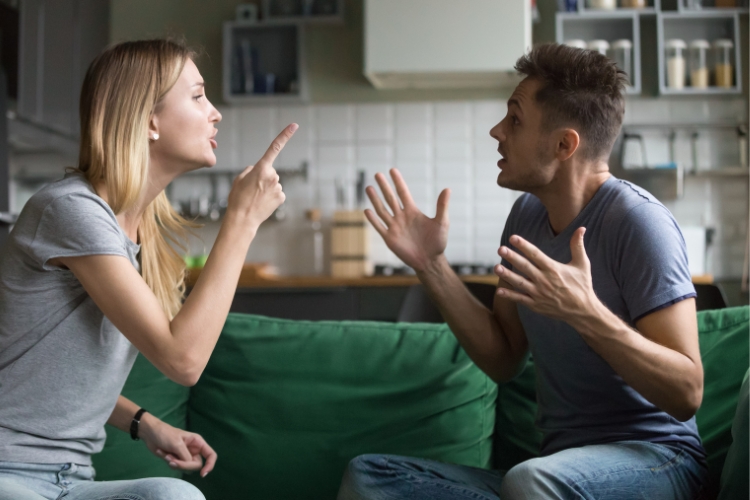In this blog post guide, we will tell you the complexities and nuances of significant age differences in romantic partnerships.
This exploration addresses the societal perceptions, psychological impacts, and the diverse strategies couples employ to navigate the challenges that come with a 25-year age disparity.
We aim to provide a comprehensive understanding of how such age gaps can influence the relationship itself, the couple’s interaction with society, and the evolving global perspectives on age gap relationships.
Key Takeaways
- Age gaps in relationships, particularly those as wide as 25 years, can lead to social stigma and require couples to use strategies such as passing, lampooning, or dismissing to navigate judgment.
- Relationship satisfaction can vary with age disparities, with some research indicating increased satisfaction and commitment in certain age gap dynamics, particularly with older women and younger men.
- Couples with significant age differences may face challenges related to maturity levels, life stages, and power imbalances, necessitating strong communication and sometimes therapy.
- Globally, the average age gap in relationships is around 4.2 years, but cultural acceptance of larger age differences varies, with some societies more open to significant age disparities.
- Attitudes towards age gap relationships are evolving, influenced by media, celebrity relationships, and a general shift towards greater acceptance of diverse relationship structures.
Understanding the Social Stigma Surrounding Age Gap Relationships

Cultural Norms and Age-Related Expectations
In the realm of romantic relationships, cultural norms play a pivotal role in shaping the expectations and perceptions of age gaps. These norms are often unwritten, yet they exert a powerful influence on how society views couples with significant age differences.
For instance, younger women in age-different relationships may find their choices scrutinized in light of cultural factors that dictate appropriate age boundaries.
The social stigma attached to age gap relationships can manifest in various ways. Common challenges include judgment and negative stereotypes, where younger individuals might be presumed to have ulterior motives, and older partners are sometimes viewed with suspicion.
Couples may adopt strategies such as passing, lampooning, or dismissing to navigate these societal pressures.
While love may lead us to believe that age is just a number, the reality is often more complex. The intersection of love and age-related expectations creates a unique dynamic that couples must address both personally and publicly.
The Impact of Stigma on Relationship Dynamics
The social stigma attached to age-gap relationships can significantly influence the dynamics between partners.
Stereotypical language and labels, such as “gold diggers” or “cougars”, can add a layer of complexity to the relationship, making it more challenging for couples to navigate their bond in a judgmental society.
These stereotypes can be harmful and may lead to feelings of isolation and judgment from those around them, including family, friends, and communities. Couples in age-gap relationships often employ various strategies to cope with external pressures:
- Passing: One partner actively works to look and feel closer in age to the other.
- Lampooning: Using humor to deflect any threat stigma poses.
- Dismissing: Both partners agree to ignore the judgment as if it doesn’t exist.
The impact of stigma is not just an emotional burden but can also lead to practical challenges, such as dealing with disapproval from family and friends or navigating the expectations of society.
Strategies Couples Use to Navigate Social Judgment
Couples in age-gap relationships often face social scrutiny, but many have developed effective strategies to navigate this challenge. Acknowledgment of the challenges is the first step, as it allows couples to approach the situation with open eyes and a united front.
Open communication is crucial, as it fosters understanding and support between partners. Acceptance and resilience are also key, as they empower couples to withstand external pressures and focus on the strength of their relationship.
- Passing: One partner actively works to look and feel closer in age to the other.
- Lampooning: Using humor to deflect any threat stigma poses.
- Dismissing: Both partners agree to ignore the judgment as if it doesn’t exist.
In the face of social judgment, couples often find strength in unity and a shared commitment to their relationship, despite the opinions of others.
While some couples may choose to conceal aspects of their relationship to avoid gossip and potential social stigma, others openly confront and address concerns and disapproval from family and friends. The choice of strategy often reflects the couple’s unique circumstances and the cultural context in which they live.
The Psychological and Emotional Implications of a 25-Year Age Gap

Maturity Levels and Life Stages
When engaging in a relationship with a significant age gap, such as 25 years, partners may find themselves at different points in their maturity levels and life stages. The disparity in experiences can lead to unique challenges as each individual navigates their personal and professional growth.
- Focus your attention on your love story and continue making it a priority.
- Communicate openly with each other regularly.
- Accept your differences and find ways to complement each other.
- Make plans for your future together, considering each other’s life stages.
- Remember that maturity is relative, and accept your partner as they are.
- Be patient and flexible if you come across age-related conflicts.
- Prioritize time with your partner, scheduling regular date nights and making time for each other.
While some may view age-gap relationships skeptically, it’s essential to recognize that maturity is not solely defined by age. Partners in such relationships often develop their own unique rhythm that transcends societal expectations.
The key to navigating these differences is open communication and a willingness to adapt. By acknowledging and respecting each other’s life phases, couples can build a strong foundation that withstands the pressures of an age gap.
Power Imbalances and Relationship Satisfaction
In relationships with a significant age gap, power imbalances can manifest in various aspects, from experience to financial stability. The older partner often brings more resources to the table, which can lead to a dependency dynamic, where the younger partner might rely on the older for guidance and support.
This can affect how both partners perceive their value within the relationship, ultimately impacting satisfaction.
Finding a healthy balance of power is crucial for both partners to feel equally important. It’s not just about financial equity but also about respecting each other’s autonomy and contributions, regardless of age.
Merging financial matters can be particularly challenging. Differences in economic security and life stages can lead to conflicts, emphasizing the need for open communication and mutual understanding. Here are some strategies couples can use to address power imbalances:
- Establishing clear and fair financial arrangements
- Encouraging mutual decision-making
- Recognizing and valuing each partner’s life experiences
- Seeking therapy or counseling to navigate complex dynamics
Coping with Differences: Communication and Therapy

In relationships with significant age gaps, such as a 25-year difference, communication is the cornerstone of navigating the complexities that arise. It’s essential for partners to actively engage in open and honest dialogues about their feelings, expectations, and concerns.
Therapy can play a pivotal role in facilitating these conversations, providing a neutral space for both individuals to express themselves without judgment.
Couples therapy, especially when conducted online, offers flexibility and accessibility, making it easier for partners to seek help despite busy schedules. The guidance of a licensed therapist can be instrumental in developing effective communication strategies and resolving conflicts.
Recent studies suggest that online couples therapy can be as effective as traditional in-person sessions. Here’s a brief overview of what therapy can address:
- Identifying and challenging unhealthy thought patterns
- Enhancing emotional connection
- Improving conflict resolution skills
- Strengthening relationship satisfaction
Ultimately, the goal of therapy in age gap relationships is to bridge the gap not just in years, but in understanding and empathy between partners.
Navigating Family Dynamics and Societal Expectations

Dealing with Disapproval from Family and Friends
When navigating an age gap relationship, one of the most significant hurdles can be managing the disapproval from family and friends. Loved ones may question the validity and health of the relationship, often voicing concerns that stem from their own biases or societal norms.
It’s crucial to decide what you want them to understand about your partnership—whether it’s the happiness it brings you, your future plans, or the respectful treatment you receive from your partner.
- Listen to their concerns and respond with calm, logical answers.
- If questions become intrusive, set boundaries respectfully.
- Use strategies like passing, lampooning, or dismissing to cope with judgment.
It can be easy to feel like age is just a number when you’re in love. However, even though you see the beautiful aspects of your relationship, not everyone will share your perspective.
Ultimately, it’s about finding a balance between being open to dialogue and maintaining the integrity of your relationship. While some may never fully accept the age difference, others may come around after seeing the genuine connection and mutual respect that exists between partners.
The Role of Social Support in Age Gap Relationships
In the context of age gap relationships, social support can play a pivotal role in the couple’s ability to navigate the challenges they face. Perceived social support is associated with greater psychological well-being, including subjective happiness and positive mood states.
This is particularly relevant for couples with significant age differences, as they often encounter societal skepticism and judgment.
For the younger partner, social support may manifest in the form of economic security, maturity, and exposure to different perspectives. The older partner, on the other hand, may appreciate the youthful energy and caretaking potential of their younger counterpart.
Together, they can leverage these benefits to build a resilient and supportive relationship.
While each relationship is unique, it’s clear that the presence of social support can significantly influence the dynamics of an age gap relationship. It can provide a buffer against external pressures and enhance the overall satisfaction and commitment within the partnership.
Couples in age gap relationships may adopt various strategies to gain social support and manage stigma. These include:
- Seeking acceptance within their social circles
- Engaging in open communication about the challenges they face
- Emphasizing the strengths of their partnership to others
Overcoming Prejudices and Misconceptions

Couples in age gap relationships often face a barrage of prejudices and misconceptions from society. Overcoming these challenges requires a multifaceted approach, where both partners actively engage in strategies to bridge the gap in understanding. Some common tactics include:
- Passing: One partner adapts their appearance or behavior to seem closer in age to the other.
- Lampooning: Using humor to deflect stigma and ease social tension.
- Dismissing: Choosing to ignore negative judgments and focusing on the relationship itself.
Addressing concerns and disapproval from family and friends is crucial. It’s about finding balance and ensuring that the love between partners is the focal point, not the age difference.
Encouraging diverse self-presentation and interactions can also play a significant role in combating age-related ‘othering’. By challenging societal norms and showcasing the normalcy of age gap relationships, couples can pave the way for broader acceptance and understanding.
Age Gap Relationships: A Look at Global Trends and Statistics

Average Age Gaps in Relationships Worldwide
Globally, the average age gap in relationships presents a fascinating picture of cultural diversity and social norms. On average, men are typically around 4.2 years older than their female partners in romantic relationships. This figure, however, masks significant variations across different regions and types of relationships.
- Remarried couples tend to have the largest age differences, with an average of 7.4 years for same-sex couples and 5.6 years for heterosexual couples.
- First-time marriages usually see the smallest age gaps, averaging 2.9 years for heterosexual couples and 5.8 years for same-sex couples.
- The mean age difference for same-sex couples is notably higher at 6.3 years, compared to 3.9 years for heterosexual couples.
In the context of France, a snapshot of 2017 data reveals that approximately 12 percent of opposite-sex couples who got married exhibited an age difference. This statistic underscores the variability of age gaps within even a single country.
Cultural Variations in Acceptance of Age Differences
The acceptance of age differences in relationships is as diverse as the cultures that scrutinize them. From the statistics presented, it is clear that age differences between couples vary from country to country.
In some societies, larger age gaps are commonplace and even expected, particularly in relationships where men are significantly older than their female partners. Conversely, other cultures may favor minimal age differences, emphasizing partnerships where individuals are at similar life stages.
italics play a significant role in shaping these cultural attitudes. For instance, in regions where family lineage and inheritance are paramount, larger age gaps might be more acceptable to ensure the transfer of wealth and status.
On the other hand, societies that value individualism and romantic love may be more supportive of couples who are closer in age.
While every relationship is unique, the cultural lens through which it is viewed can significantly influence its perception and, by extension, its success.
Here is a brief overview of how different cultures view age gaps in relationships:
- In Western societies, smaller age gaps are generally more accepted, with the average being one to three years.
- Certain Eastern cultures may have less resistance to larger age gaps, especially in traditional settings.
- Scandinavian countries often show progressive attitudes, with a focus on equality and personal choice, regardless of age.
Understanding these cultural variations is crucial for couples navigating an age gap, as it can inform their approach to dealing with societal expectations and judgments.
The Evolution of Age Gap Norms Over Time

The perception of age gap relationships has undergone a significant transformation over the years. Historically, larger age differences were often associated with specific gender and economic dynamics, with older men typically partnering with much younger women.
However, as societal norms evolve, these relationships are increasingly viewed through a lens of equality and mutual respect.
The evolution of age gap norms reflects a broader shift towards more progressive attitudes about relationships. This is particularly evident in the context of dating apps and social media, where age differences are often less of a focal point. Instead, compatibility and shared interests take precedence, signaling a move away from traditional age-related expectations.
Dating apps have played a pivotal role in normalizing age gap relationships by providing a platform where age is just one of many factors considered by potential partners. The shift towards viewing age-gap relationships as partnerships of equals is a testament to changing societal norms.
But the age-gap relationships of today are increasingly seen as romantic partnerships of equals, where respect and common interests rise above age.
While the acceptance of age gap relationships varies globally, the trend is towards greater tolerance and understanding. This is reflected in the following table, which outlines the acceptance levels of age-disparate and intergenerational partnerships:
The Future of Age Gap Relationships: Changing Attitudes and Acceptance

Shifting Perspectives on Age and Romance
As society evolves, so do the perceptions of age in romantic relationships. The concept of ‘age is just a number’ is gaining more acceptance, as individuals seek connections that transcend traditional boundaries.
This shift is reflected in the ways couples with significant age differences are navigating their relationships, often employing strategies such as passing, lampooning, and dismissing to manage societal judgment.
- Passing: One partner actively works to look and feel closer in age to the other
- Lampooning: Using humor to deflect any threat stigma poses
- Dismissing: Both partners agree to ignore the judgment as if it doesn’t exist
It can be easy to feel like age is just a number when you’re in love. However, even though you see the beautiful aspects of your relationship, friends and family may not always react with joy when you tell them.
Research indicates that women’s preferences in partners may evolve with age, suggesting a more dynamic understanding of what constitutes an ideal relationship. This is particularly relevant as studies, such as the one titled ‘Age Influences Women’s Ideal Partner Preferences’, reveal that women’s partner preferences change over time, challenging the static nature of traditional views.
The Role of Media and Celebrity Influence
The media’s portrayal of age gap relationships often oscillates between criticism and romanticization. Celebrities, with their amplified visibility, play a pivotal role in shaping public opinion on this sensitive topic.
The influence of high-profile figures and the entertainment industry can either challenge or reinforce societal norms surrounding age differences in romantic partnerships.
The case of Billie Eilish, for instance, highlights how celebrity status can affect perceptions of personal relationships. Discussions about her dating life, including the nuances of age gaps, are amplified by her fame, leading to a broader conversation about these dynamics in the public sphere.
It’s not just about who celebrities date, but how the media frames these relationships that can sway public sentiment.
Media outlets have the power to craft narratives that either question or normalize age gaps. This is evident in the way stories are told, the language used, and the underlying messages conveyed to the audience. The following points illustrate the media’s role in influencing views on age gap relationships:
- Portrayal of age gap relationships in movies and TV shows
- Coverage of celebrity relationships with significant age differences
- Discussion of age-related themes in music and literature
- Analysis of the impact of celebrity endorsements on public attitudes
The media’s influence extends beyond mere reporting; it actively participates in the construction of societal norms and expectations regarding age gap relationships.
Predicting Trends in Age Gap Relationships

As society progresses, the trends in age gap relationships are likely to evolve. Predictive analysis suggests a gradual increase in societal acceptance, as evidenced by the growing visibility of such relationships in media and the changing attitudes of younger generations.
However, the complexity of these relationships cannot be understated, with factors like maturity, life goals, and cultural backgrounds playing significant roles.
The following table highlights some key U.S. statistics on age gap relationships:
| Relationship Type | Average Age Gap (Years) |
|---|---|
| Remarried Couples | 7.4 (same-sex), 5.6 (heterosexual) |
| First-time Marriages | 2.9 (heterosexual), 5.8 (same-sex) |
| Overall Mean | 6.3 (same-sex), 3.9 (heterosexual) |
While the numbers provide a snapshot, they do not capture the full spectrum of individual experiences and societal nuances.
Couples in age gap relationships often find themselves at the forefront of a cultural shift. As they navigate their unique challenges, they also contribute to a broader dialogue about love, age, and acceptance.
The future may hold a more nuanced understanding of age gap relationships, moving beyond stereotypes to a recognition of the diversity of human connections.
Conclusion
In exploring the dynamics of a 25-year and 21-year age gap in relationships, we’ve uncovered a complex tapestry of societal norms, personal preferences, and unique challenges.
While age gaps in relationships can be met with varying degrees of acceptance and judgment, the essence of a successful partnership often boils down to mutual respect, communication, and shared values. Whether age is just a number or a significant factor in a relationship is ultimately a personal consideration, shaped by the individuals involved and their capacity to navigate the intricacies of their bond.
As society continues to evolve, so too does our understanding of love and compatibility, reminding us that every relationship is as unique as the people within it.
FAQs:
Do age gaps matter in relationships?
Age gaps in relationships can matter to varying degrees depending on the individuals involved. While some may not find it significant, others may face challenges such as differences in maturity, life stages, and social judgment, particularly if the age gap is substantial or goes against cultural norms.
Is 18 and 24 a big age difference for a relationship?
An age difference between an 18-year-old and a 24-year-old can be considerable due to different maturity levels and life stages, possibly leading to power imbalances and other challenges in a romantic relationship.
What is the average age gap in relationships worldwide?
Worldwide, the average age gap in romantic relationships is about 4.2 years, with men typically being older than their female partners.
Why do we care so much about age gap relationships?
Age gap relationships often attract attention because they are less common and can be seen as taboo. People may be curious or judgmental about the choice to date someone significantly older or younger.
How does an age gap affect a relationship?
An age gap can affect a relationship in various ways. Research indicates that relationships with older women and younger men may experience increased satisfaction, trust, and commitment, while older men with younger women tend to have similar satisfaction levels as those with similarly-aged partners.
How do you deal with differences in a relationship, including age gaps?
Dealing with differences, such as age gaps, in a relationship requires respect, good communication, and sometimes couples therapy to navigate challenges effectively.

